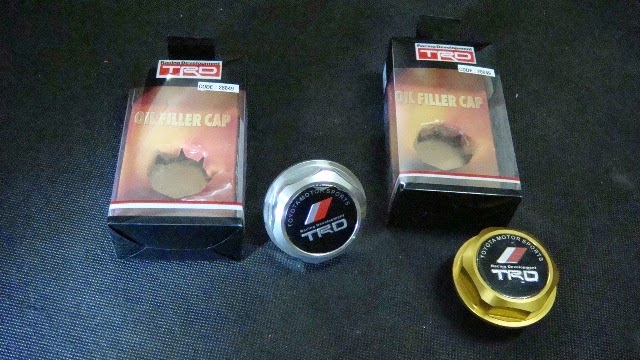Proper car upkeep takes more than keeping fuel in the tank and changing the engine oil regularly, so neglect is neither an option nor an excuse. So, at least whip out your phone and enter our advice, it ranks high or at least it should, among must-remember data. For each entry on our car-maintenance checklist, we’ll show the general time and/or mileage intervals between replacements, but always confirm with your owner’s manual, since these may vary from car to car.
1) Fuel filter
This is an item that’s probably as important as it is overlooked. Assuming yours is a fuel-injected car, the fuel filter is more or less on continuous duty whenever your ignition is on and the fuel pump is active, preventing impurities from clogging injectors. So, over time, replacement will be necessary.
When to replace: Every 2 years or 40,000 km.
2) Power-steering fluid
On your car-part replacement calendar, it doesn’t get much easier than where your power steering fluid is concerned. Still, give it proper consideration, since it lubricates the system and keeps the steering feel consistent. Periodic checks of the fluid are done with a glance at the reservoir or the dipstick inside it. Make sure you add only the manufacturer’s suggested fluid type and talk to a technician if the level drops considerably or you feel surges of resistance as you turn the wheel.
When to replace: Inspect level with every engine-oil change, top off as needed.
3) Battery
How often do car batteries receive proactive attention? Even if you keep your terminals clean and your charging system works fine, you’ll eventually need to replace the battery. When you do, do it right. Use only the battery that matches manufacturer’s specs at the very least.
When to replace: Typically 24 to 48 months or as needed.
4) Air filter
Most often out of sight and out of mind, the air filter deserves better, and a place on your car part replacement calendar is a start. Try running with your hand over your mouth, and you’ll get an idea how much your engine depends on air. That air for the engine and airflow sensor still has to be free of contaminates, though, and that’s your air filter’s job.
When to replace: 12 months, 20,000 km or as needed.
5) Automatic transmission fluid & filter
In cars with conventional automatic or clutchless gearboxes, fluid is to the transmission what oil is to the engine in terms of function and importance. It fights friction and keeps things within safe operating temps. Ignoring it pretty much leads to the same issues: expensive repair bills at the mechanic. Fortunately, prevention is similarly easy. Check the fluid periodically, top off with the specific kind recommended in your owner’s manual and change it occasionally along with the filter.
When to replace: Every 2 years or 40,000 km.
6) Spark plugs
You can’t have an internal combustion engine without combustion, and spark plugs make it happen by firing up the mixture of air and fuel in each cylinder, either alone or in a pair. Cleaner-burning engines and advances in plug construction mean less maintenance and extended service, but they still need to be replaced. Whether or not they’ve reached their mileage limit, they (and the plug wires) could be to blame when mileage suffers, the engine runs poorly and you fail your emissions test.
When to replace: Every 50,000 to 160,000 km.
7) Engine belts & timing belts
It’s no accident for engine belts to have a prominent spot on your car-part replacement calendar. The one or more outside keep components like your alternator and water pump active. Inside, the timing belt (some cars have timing chains) keeps valves from bashing into pistons. When either belt fails, it’s bad news. At the very least, your forward progress will cease to be. At worst, you’ll need major engine work at the mechanic in the case of some timing-belt breakage and the resulting carnage.
When to replace: Every 3 years or 60,000 km for engine belts or 96,000 to 144,000 km for the timing belt.
8) Coolant
That liquid in the radiator is a real multitasker. It serves as antifreeze, coolant and guards against corrosion in the cooling system. So, given its duties, you can appreciate its rank on your car-part replacement calendar. Do check the level regularly, but also understand its cleanliness and potency diminish. Topping off and changing should only be done with the right coolant type and water mixture ratio (typically 50/50).
When to replace: Every 2 years or 40,000 km.
9) Tyres
Tyre wear patterns are telling - revealing aggressive driving, improper inflation or worn suspension components. Regardless, you’ll eventually need fresh tyres. The best way to confirm is with a tread depth gauge. Age is also a concern, since longer-lasting tyres can mean safety is compromised even with adequate tread depth.
When to replace: At the minimum safe tread depth or 3 to 6 years.
10) Brakes
The effects of failures of the other items on our car-part replacement calendar range from inconvenient to being stranded, but with the possible exception of tyres, no failure's potentially lethal except that of brakes. Preventing that mess is drama-free: Just check the fluid level and change it every so often. Keep an eye on brake-pad condition, and replace as soon as safety is compromised.
When to replace: Every 2 years or 40,000 km (fluid), prior to minimum safe thickness (pads).

.jpg)
.jpg)




.JPG)
.JPG)
.JPG)
.JPG)
.JPG)
.JPG)










.jpg)
.jpg)
.JPG)
.JPG)
.JPG)
.JPG)
.JPG)
.JPG)
.JPG)
.JPG)
.JPG)
.JPG)

.JPG)
.JPG)
.JPG)



